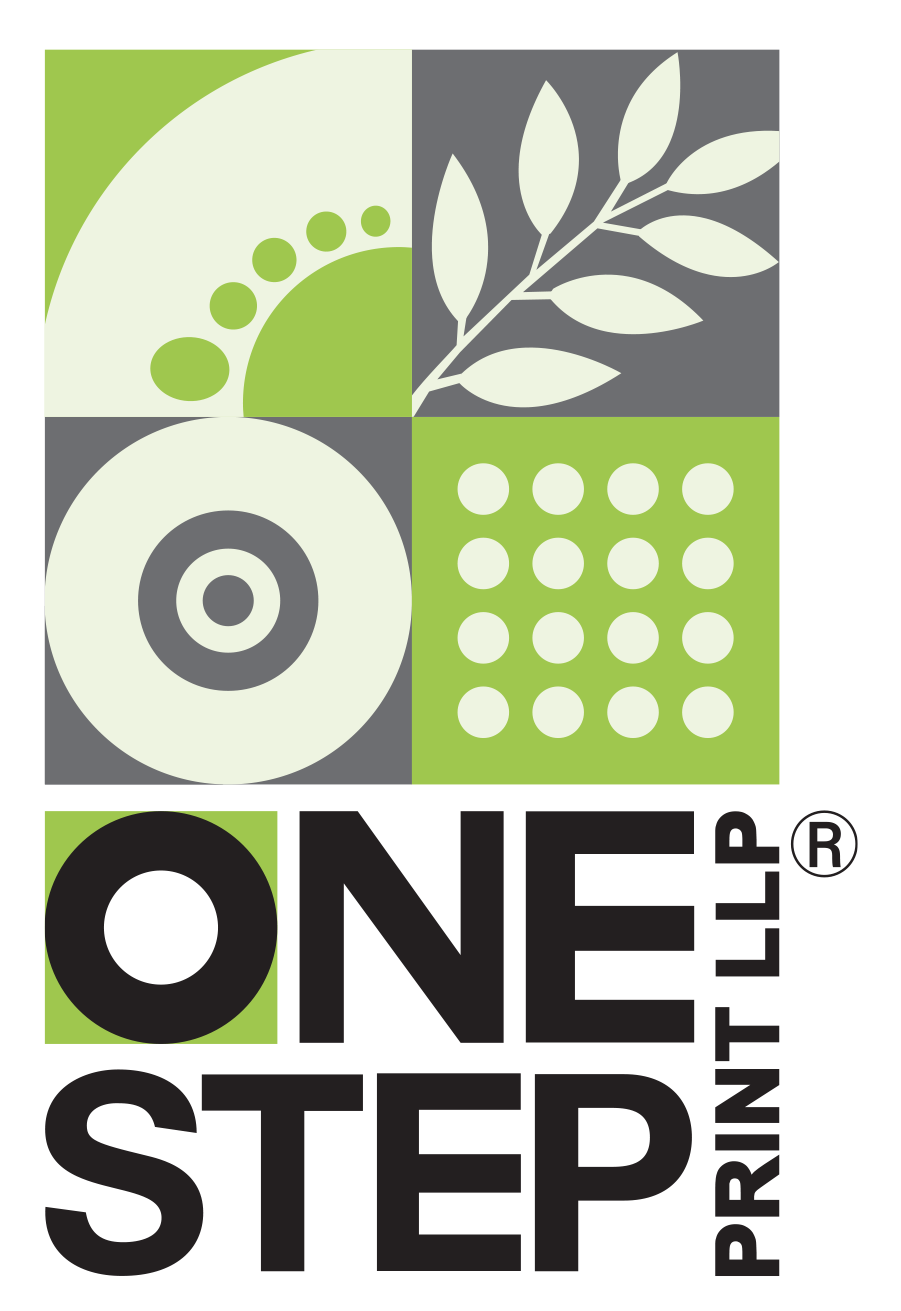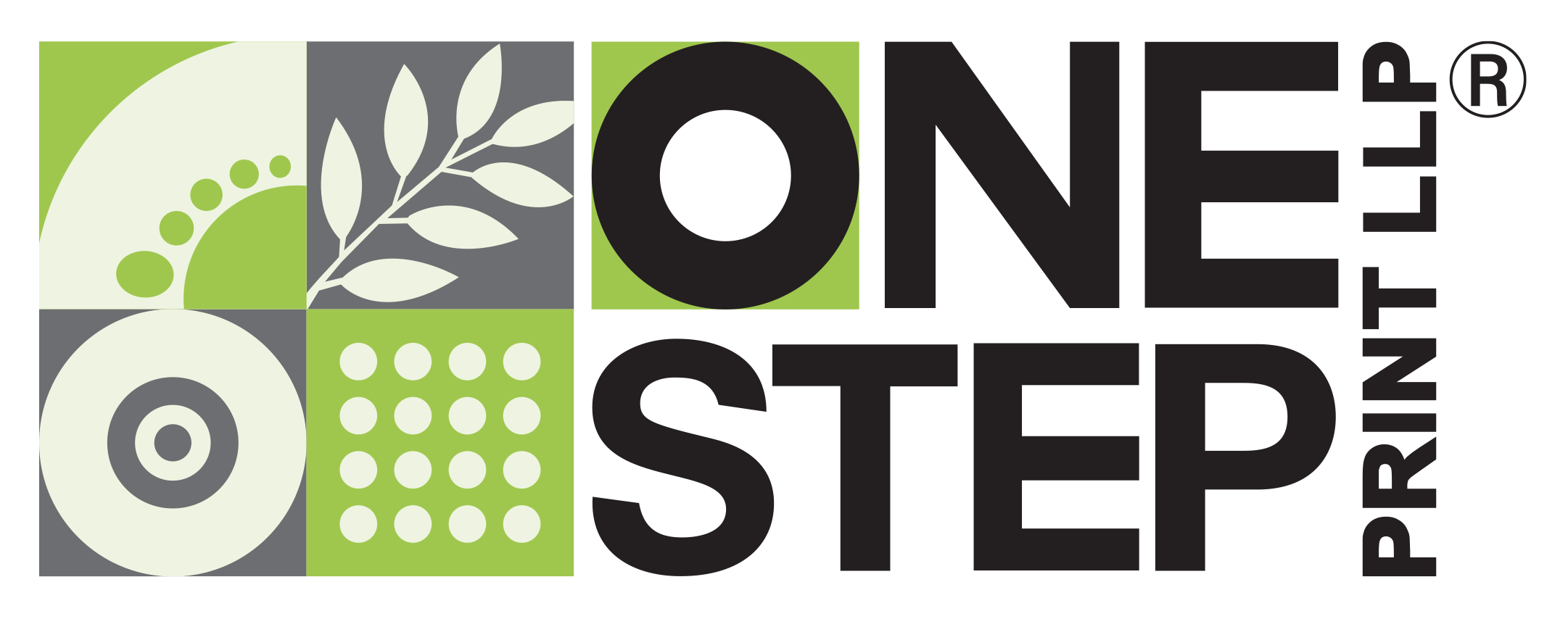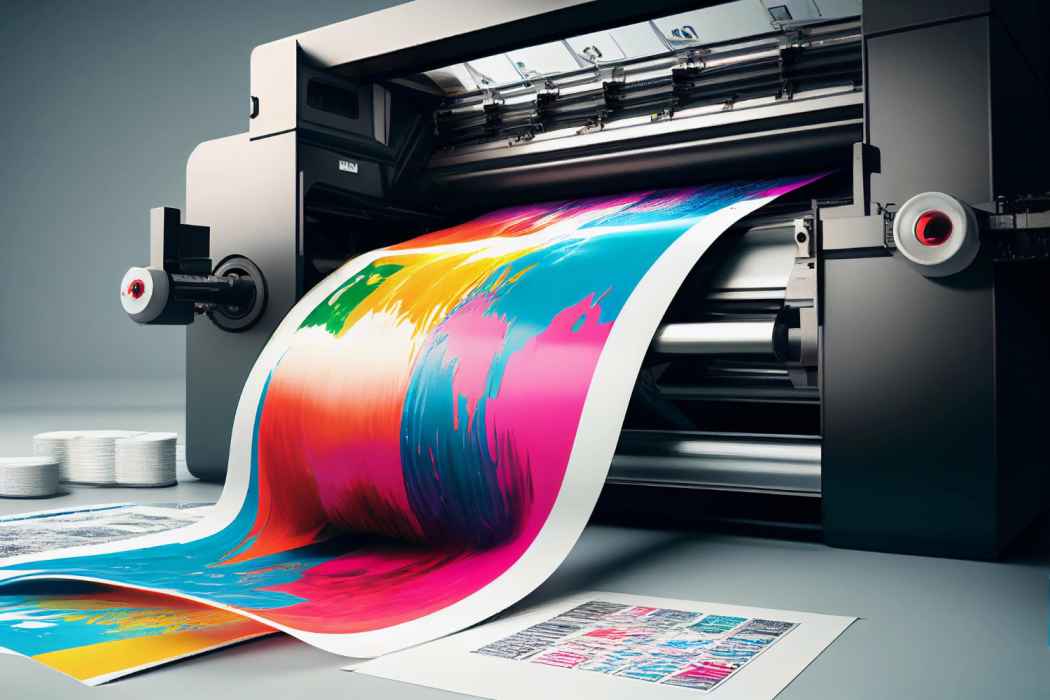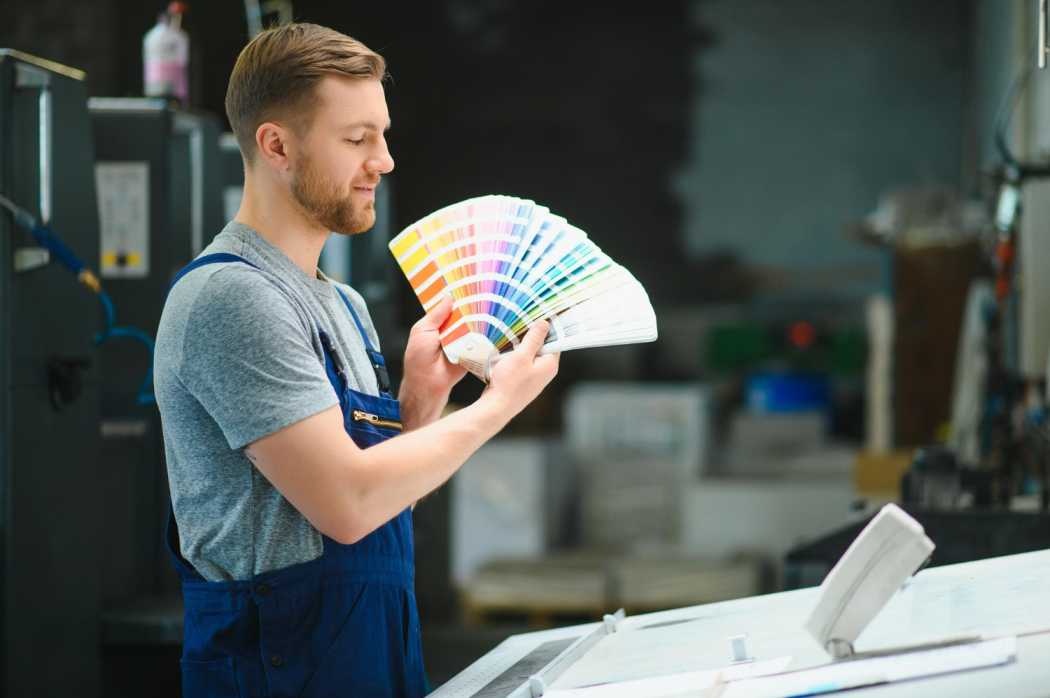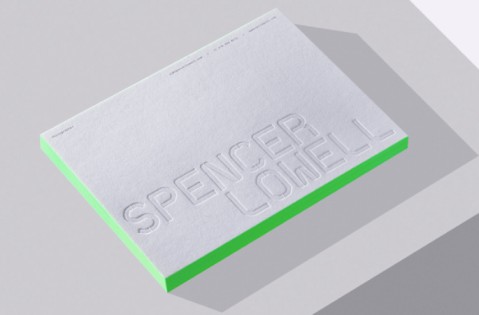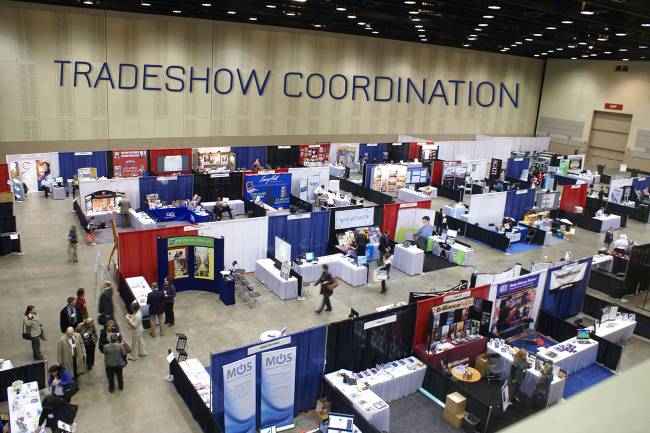AN EXPERT GUIDE TO PICKING PAPER FOR PRINT

When you’re getting ready to print something, like brochures or business cards, one of the big decisions is picking the right paper. Your choice of paper can change how your prints look and even how much they cost. But with so many options out there, it can feel overwhelming. Don’t worry! This guide is here to help you understand all about printing paper so you can make the best choices for your project.
COATED VS. UNCOATED PAPER
Uncoated paper doesn’t have any extra coating or shine. It’s great for projects where you need to write on the paper because there’s no glare. Plus, it absorbs ink well.
Coated paper comes in different finishes, from dull to super shiny. It gives a smoother look, more opacity, and makes images look sharper compared to uncoated paper.
You can get coated paper with coating on just one side (C1S) or both sides (C2S).
BRIGHTNESS
Paper comes in various shades of white, and not all “white” papers look alike. Brightness measures how much light a paper reflects on a scale from 0 to 100. The higher the number, the brighter the paper.
Coated papers are grouped into different grades based on their brightness:
- Premium: 88 and above
- Grade 1: 85-87.9
- Grade 2: 83-84.9
- Grade 3: 79-82.9
- Grade 4: 73-78.9
- Grade 5: 72.9 and below
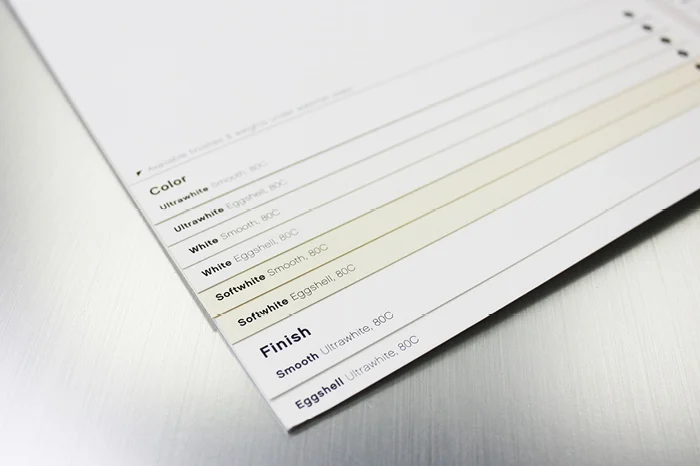
COLOUR
Paper comes in a rainbow of colors and choosing the right one matters. Colored paper can impact how light ink colors look when printed. The four-color CMYK printing process works best on neutral white paper. However, you can save money by using colored paper and printing with just one ink color.
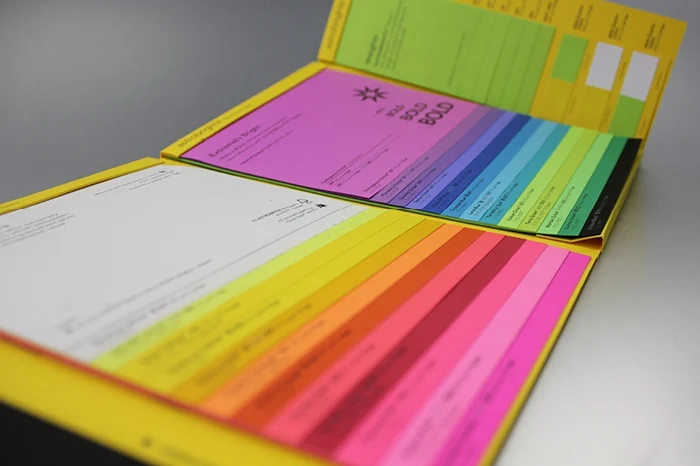
WEIGHT
Paper weight refers to the thickness of the paper. Paper below 170 gsm is referred to as “Paper” or “Text”, while paper above 170 gsm is referred to as “Card” or “Cover”.
GSM stands for “Grams per Square Meter”. For example, if 1 square meter of paper weighs 170 grams, then that paper is of 170 gsm thickness and so on.
Thinner text paper is used for items like letterheads, brochures, and flyers, while thicker card/cover paper is used for the covers of booklets, business cards, or postcards.
However, it’s important to note that weights aren’t consistent across categories. For instance, a 130 gsm uncoated paper is thicker than 130 gsm coated art paper. Additionally, papers from different mills, even with the same weight, can feel different due to manufacturing methods.
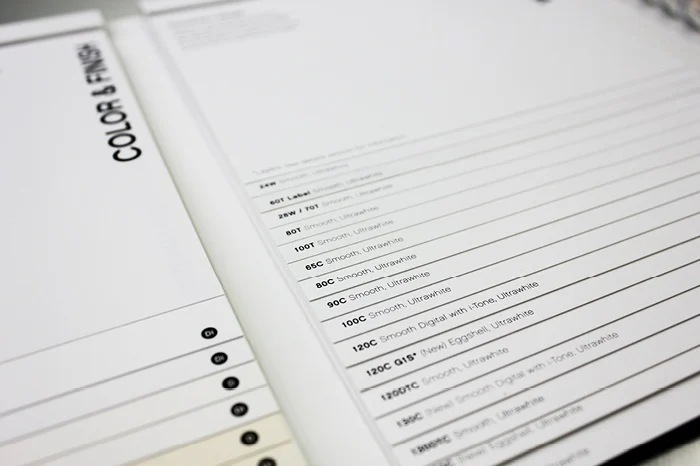
Picking the right paper is super important for your printing project. By understanding the differences between coated and uncoated paper, thinking about brightness, color options, and paper weight, you can make smart choices that fit your project and your budget. And if you’re still not sure, we are here to assist you !
Recent Posts
AN EXPERT GUIDE TO PICKING PAPER FOR PRINT
When you’re getting ready to print something, like brochures or business cards, one of the big decisions is picking the right paper. Your choice of paper can change how your prints look and even how much they cost. But with so many options out there, it can feel overwhelming. Don’t worry! This guide is here to help you understand all about printing paper so you can make the best choices for your project.
COATED VS. UNCOATED PAPER
Uncoated paper doesn’t have any extra coating or shine. It’s great for projects where you need to write on the paper because there’s no glare. Plus, it absorbs ink well.
Coated paper comes in different finishes, from dull to super shiny. It gives a smoother look, more opacity, and makes images look sharper compared to uncoated paper.
You can get coated paper with coating on just one side (C1S) or both sides (C2S).
BRIGHTNESS
Paper comes in various shades of white, and not all “white” papers look alike. Brightness measures how much light a paper reflects on a scale from 0 to 100. The higher the number, the brighter the paper.
Coated papers are grouped into different grades based on their brightness:
- Premium: 88 and above
- Grade 1: 85-87.9
- Grade 2: 83-84.9
- Grade 3: 79-82.9
- Grade 4: 73-78.9
- Grade 5: 72.9 and below

COLOUR
Paper comes in a rainbow of colors and choosing the right one matters. Colored paper can impact how light ink colors look when printed. The four-color CMYK printing process works best on neutral white paper. However, you can save money by using colored paper and printing with just one ink color.

WEIGHT
Paper weight refers to the thickness of the paper. Paper below 170 gsm is referred to as “Paper” or “Text”, while paper above 170 gsm is referred to as “Card” or “Cover”.
GSM stands for “Grams per Square Meter”. For example, if 1 square meter of paper weighs 170 grams, then that paper is of 170 gsm thickness and so on.
Thinner text paper is used for items like letterheads, brochures, and flyers, while thicker card/cover paper is used for the covers of booklets, business cards, or postcards.
However, it’s important to note that weights aren’t consistent across categories. For instance, a 130 gsm uncoated paper is thicker than 130 gsm coated art paper. Additionally, papers from different mills, even with the same weight, can feel different due to manufacturing methods.

Picking the right paper is super important for your printing project. By understanding the differences between coated and uncoated paper, thinking about brightness, color options, and paper weight, you can make smart choices that fit your project and your budget. And if you’re still not sure, we are here to assist you !
